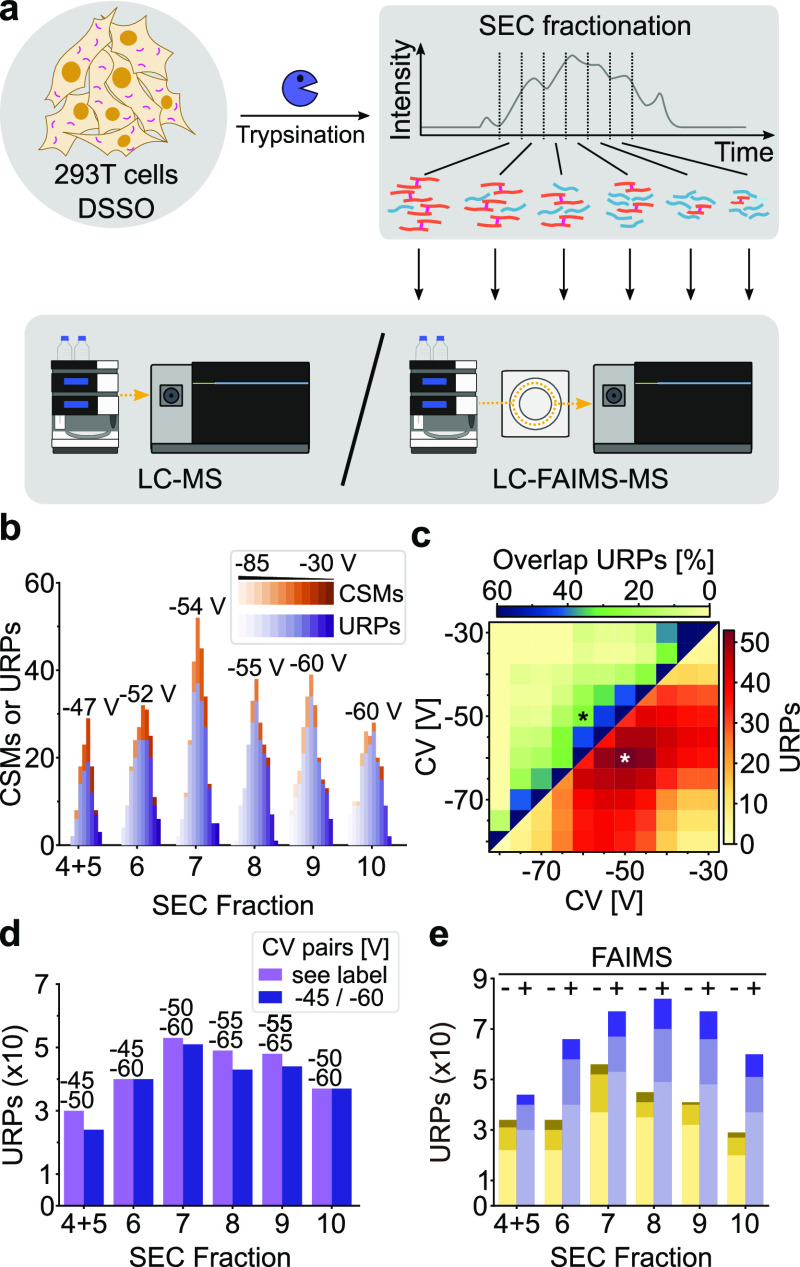Figure 3.
FAIMS-assisted LC–MS for the SEC-fractionated 293T*DSSO sample. (a) Experimental workflow to probe FAIMS separation parameter dependency from SEC fractionation. 293T cells were cross-linked in situ using DSSO, tryptically digested, and fractionated by SEC, leading to six fractions of interest. The analysis by LC–MS was conducted with or without the FAIMS Pro ion-mobility device coupled in between LC and MS. (b) Histogram of detected CSMs and URPs for each CV value, split by the SEC fraction. Values indicated on the top represent the average CV for a given SEC fraction. A trend to more negative CVs was observed with later SEC fractions. (c) Heatmaps on combining two CVs for SEC fraction 7 (for fraction-wise and global heatmaps, see Figures S9 and S10). In the top left, the percentaged overlaps in URPs; in the bottom right, the sum of URPs from a 2-CV combination are given. The asterisks mark the best 2-CV combination for this fraction. (d) Histogram of detected URPs comparing fraction-wise (“see label”) and global (“–45/–60”) optimal 2-CV combinations with CV value pairs indicated. € Histogram on achieved gains in identifications of URPs upon repeated measurements (one to three, stacked from the bottom to top) when using FAIMS (blue) compared to not using it (yellow). For FAIMS-assisted measurements, 2-CV combinations maximizing the identifications were merged in silico.

